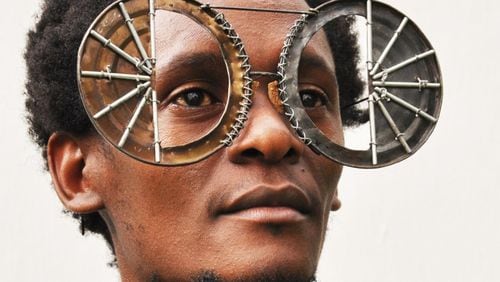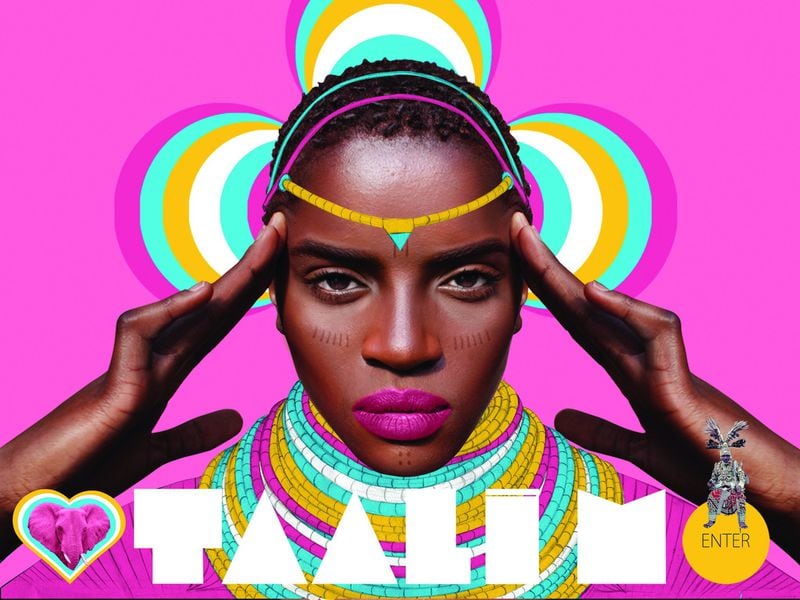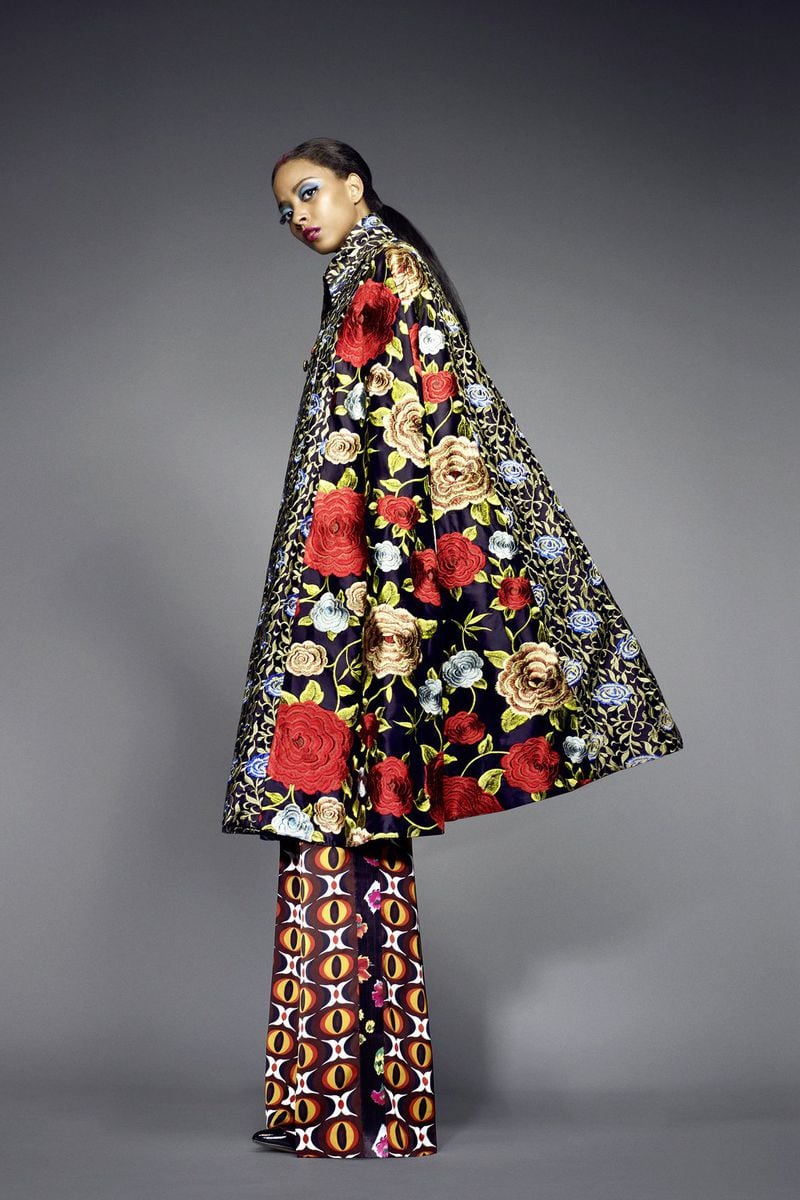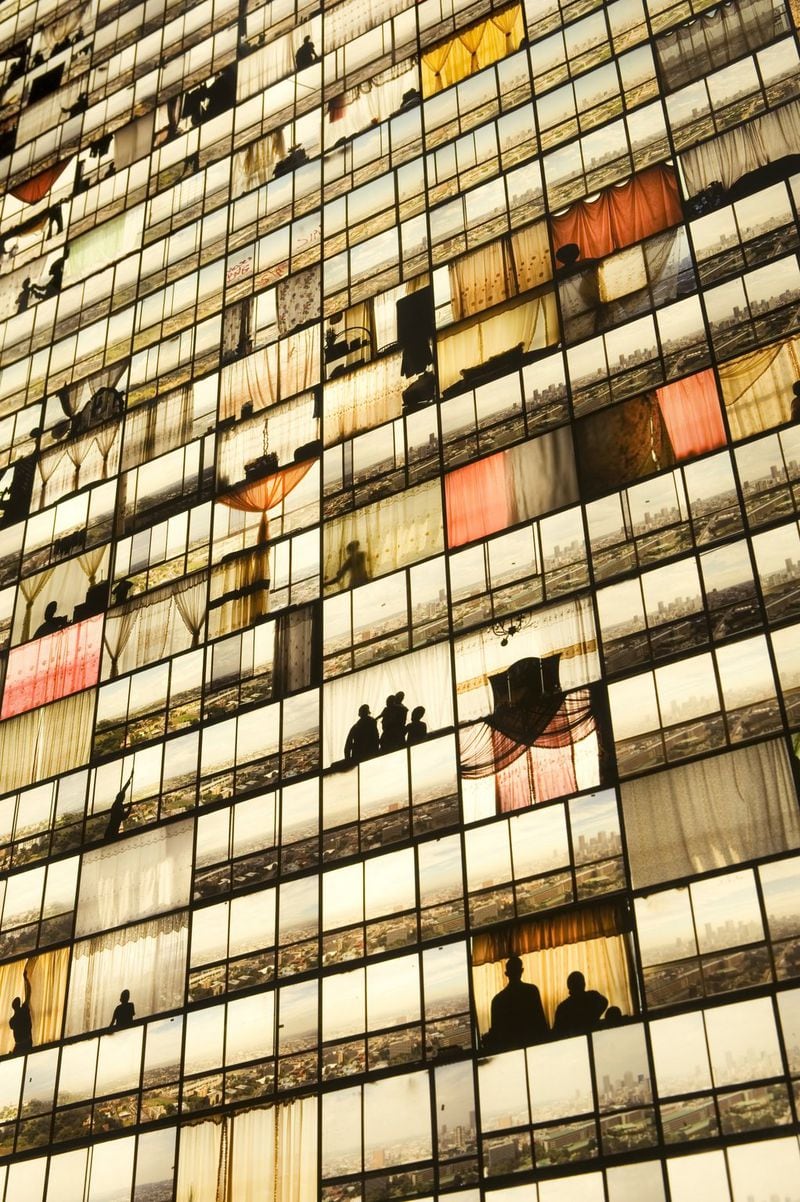In one simple display in the new High Museum of Art exhibit "Making Africa: A Continent of Contemporary Design," we see the familiar outline of the African continent, with much of the rest of the world tucked inside.
Called "The True Size of Africa," it is a map that is freed from the distortions of the familiar Mercator projection. (Mercator maps tend to exaggerate the size of land masses near the poles.) It shows how other countries and subcontinents could fit in Africa's 30 million square kilometers, which easily swallows China, India, Europe and Japan, with the United Kingdom fitting (almost) neatly inside Madagascar. "Africa is simply huge," writes creator Kai Krause, "much, much bigger than we all thought."
"Making Africa" makes its American debut at the High Museum, and opens to the public with a party Friday night. Like the continent, this display is also big — the biggest exhibition of African art and design ever presented at the High.
“There’s too much,” said the High’s curator of African art Carol Thompson, “that’s Okwui’s style. There’s always surplus; there is something for everyone.”
Okwui is Okwui Enwezor, the Nigerian-born director of Munich’s Haus der Kunst, and artistic director of the Venice Biennale in 2015. Enwezor was the advising curator for the “Making Africa” exhibit, which was created by the Vitra Design Museum in Weil am Rhein, Germany, and the Guggenheim Museum, Bilbao, Spain. Thompson first saw the show in Spain in August 2016, going to the Centre de Cultura Contemporània de Barcelona every day for a week without running out of things to contemplate and enjoy.
Thompson, during a recent walk-through, adds that "one of Okwui's primary goals is to change the way people look at Africa," which is why the exhibit opens with a metaphorical eye-opener, the whimsical/fantastical sculptures of Kenyan artist Cyrus Kabiru called "C-Stunners."
With creations from 120 different artists, the exhibit offers video, technology, fashion, sculpture, magazines, paintings, architecture and other examples of “design” in its broadest sense.
Including several pieces from the High's permanent collection, the exhibit shows an Africa that is young, urban and growing rapidly. "It is focused very heavily on urban Africa rather than rural traditions, because that has so often been neglected," said Thompson.
Here are a few of the sights within:
- "C-Stunners," by Kabiru, are 16 offbeat sculptures posing as exotic eyewear. One looks like a radar dish, another a jet engine, a third an insect's eyeballs. The fanciful creations are meant to offer a shift in perspective, to suggest a new way of seeing Africa.
- "Ponte City," by Mikhael Subotzky and Patrick Waterhouse, is a monumental study of a notorious Johannesburg skyscraper that began life as a luxury destination and, with the end of apartheid in South Africa, decayed into a gang-infested, garbage-filled eyesore. The two artists methodically photographed every window, every door, and every TV screen in the 54-story structure, and then assembled those images into three 12-foot-tall light boxes.
- Taali M., a French singer of Congolese, Chadian and Egyptian heritage, sought a website as mysterious and primal as her music. Her web designer, Pierre-Christophe Gam, came up with a colorful, cryptic fantasy of ancient and modern symbols, and we are immersed in that world.
"Sometimes people associate Africa with trauma," said Thompson, and work by Gonçalo Mabunda embodies that trauma. Mabunda, of Mozambique, refashions deactivated pistols, machine guns, rifles, and belts of spent shells into ceremonial seats and thrones.
One of his objects was created from the armaments left over from the 27-year civil war in Angola. The dark meaning of the work is obvious, but the catalog urges a nuanced reading of Mabunda, and his insistence on “the transformative power of art.”
And there is a thread of optimism running through the show, most obvious in a project in which dancers from around the continent created their own videos set to Pharrell Williams' infectious tune, "Happy."
EXHIBIT PREVIEW
“Making Africa: A Continent of Contemporary Design”
Oct. 14-Jan. 7, 2018. 10 a.m.-5 p.m. Tuesdays-Thursdays and Saturdays; 10 a.m.-9 p.m. Fridays; noon-5 p.m. Sundays. Opening party is 6-10 p.m. Oct. 13; official opening is Oct. 14. $14.50 age 6 and up; free: 5 and under. High Museum of Art, 1280 Peachtree St. NE, Atlanta. 404-733-4400, www.high.org.
About the Author










